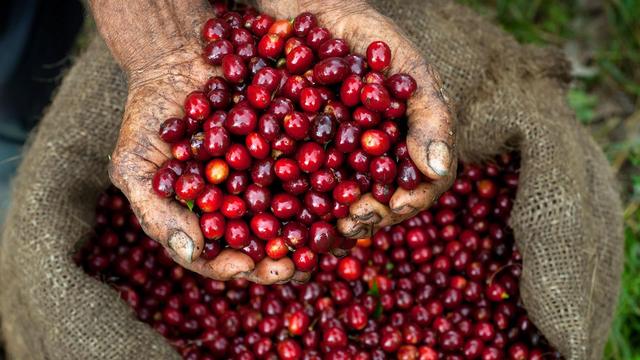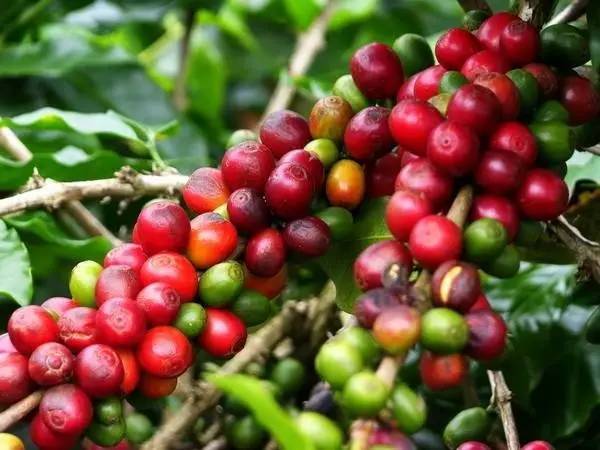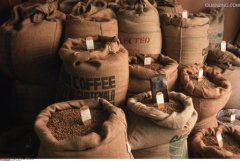[coffee Encyclopedia] teaches you to tell the good from the bad of coffee beans

Most people do not have much time to contact coffee, and it is very rare to be able to identify coffee types from coffee beans. Even if you are lucky enough to know coffee, you may not have walked through all kinds of coffee from beans to liquids. Coffee is good and bad, so how do we identify it?
1. Microclimate where coffee beans grow
Coffee comes in many shapes and sizes, and although most are the same shape, it is best to grow specific varieties to suit different local microclimates. The best farmers adapt.

2. Picking time
At the end of the harvest season, coffee beans are picked before they are fully ripe in preparation for the next season. These beans, because they are not ideal enough, are mostly classified as bad varieties called "inferior."

3. Do you want to highlight ideal features or cover up defects during baking
Not to mention any roaster, even ordinary people can produce dry, gray and dark coffee. It's a way to mask flaws, and to produce coffee with more complex fruit or caramel flavors, high-quality beans and attention to detail are essential.

4. Degree of care during drying
Once the beans have been picked, there are several different ways to dry the moisture in the beans, the easiest being to leave them outdoors for a few weeks or use an expensive dryer. High-quality coffee beans are tested at all times to make sure they don't mold, while poor-quality beans are left unattended in the sun because of high labor costs.

5. Is coffee cooled with water
In large coffee roasters, too many coffee beans are roasted at one time, so it is impossible to use air to cool down, and it is necessary to spray water mist quickly inside. Although there are no obvious data, many roasters believe that although water evaporates rapidly, if it comes into contact with coffee beans, it will reduce the overall quality.

6. The amount of coffee purchased by the roaster
Quality and quantity are directly related in terms of farm hierarchy. There is simply not enough high-quality coffee in the world to satisfy the needs of large roasters. Small companies can buy 5-10 bags and other high-quality coffees in limited or small quantities, but these quantities are not even close to a batch order from a large roaster. Once a roaster reaches a certain size, their ability to deliver high-quality coffee is greatly reduced.

7. Storage time
If the coffee shop uses beans from a good local roaster, it is within a week of coffee beans, which ensures freshness. Unlike coffee beans from big brands but of low quality.
8, heavy "quality" or heavy "quantity"
In order to expand the scale, many manufacturers will eventually sacrifice quality because of the quantity of production. When roasting 2 million pounds of coffee beans a week, there is no time for nuances.

9. Coffee aroma analysis
What makes coffee special is its aroma. While professional bakers tend to think it's silly to take notes on taste, if a company uses generic terms like "smooth" or "blod," it shows they're not trying to present more subtle characteristics.
Important Notice :
前街咖啡 FrontStreet Coffee has moved to new addredd:
FrontStreet Coffee Address: 315,Donghua East Road,GuangZhou
Tel:020 38364473
- Prev

Yunnan coffee production accounts for 99% of the country's lack of processing standards.
A cup of coffee costing tens of yuan is common in metropolises. However, in Yunnan Province, the main coffee producing area in China, the purchase price of coffee beans is about 15 yuan per kilogram. According to the figures released by the Yunnan Coffee Association, during the 2015-2016 harvest season, the average price of a kilogram of coffee beans purchased by enterprises from curry farmers is between 13 yuan and 14 yuan, and the market trade price is maintained at around 16 yuan. Coffee production in Yunnan
- Next

You like coffee? Come and set up your own coffee corner!
Go out for a cup of coffee with your best friend in the morning before going to work or on Sunday night. If you are a coffee lover, then the coffee corner should be convenient, fully functional and, of course, stylish. This is why we have collected some cool family coffee corners for your reference! The ideas of these decorations can be very different, it's entirely up to you, but I think you
Related
- Beginners will see the "Coffee pull flower" guide!
- What is the difference between ice blog purified milk and ordinary milk coffee?
- Why is the Philippines the largest producer of crops in Liberia?
- For coffee extraction, should the fine powder be retained?
- How does extracted espresso fill pressed powder? How much strength does it take to press the powder?
- How to make jasmine cold extract coffee? Is the jasmine + latte good?
- Will this little toy really make the coffee taste better? How does Lily Drip affect coffee extraction?
- Will the action of slapping the filter cup also affect coffee extraction?
- What's the difference between powder-to-water ratio and powder-to-liquid ratio?
- What is the Ethiopian local species? What does it have to do with Heirloom native species?

